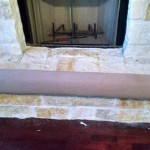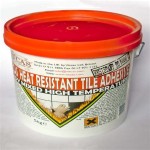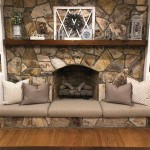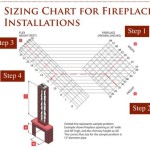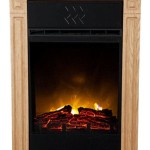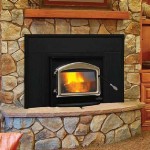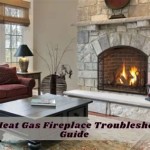Understanding Ultra-Thin Wall Fireplaces: Design, Efficiency, and Installation
Fireplaces have evolved significantly from their traditional, bulky forms. Modern architectural and interior design trends favor sleek, minimalist aesthetics, leading to the development of ultra-thin wall fireplaces. These fireplaces offer the ambiance and warmth of a conventional fireplace while minimizing spatial intrusion, making them suitable for a wide range of environments, including apartments, smaller homes, and contemporary living spaces where maximizing space is critical.
Ultra-thin wall fireplaces are characterized by their shallow depth, often achieved through innovative engineering and the use of advanced materials. This design allows them to be seamlessly integrated into walls, reducing the overall footprint and creating a visually appealing, streamlined appearance. The functionality of the fireplace is not compromised, as they are designed to provide efficient heating and maintain safety standards.
Key Design Considerations for Ultra-Thin Wall Fireplaces
The design of an ultra-thin wall fireplace requires careful consideration of several factors to ensure optimal performance, safety, and aesthetic appeal. These factors include the type of fuel used, the venting system, and the materials used in construction. Understanding these aspects is crucial for architects, designers, and homeowners considering incorporating this feature into their spaces.
Fuel Type: Ultra-thin wall fireplaces can be designed to use various fuel types, each with its own advantages and disadvantages. Wood-burning fireplaces, while offering a traditional aesthetic, require a chimney and adhere to strict building codes due to emissions. Gas fireplaces, fueled by natural gas or propane, offer convenience and cleaner burning, but require a gas line connection. Electric fireplaces, the simplest to install, require only an electrical outlet and offer realistic flame effects without producing actual heat or emissions, making them a popular choice for areas where venting is problematic or undesirable. Ethanol fireplaces, using liquid ethanol fuel, offer a ventless option with a real flame but generate less heat than gas or wood-burning models and require careful handling of the fuel.
Venting System: The venting system is another crucial design consideration, particularly for gas and wood-burning fireplaces. Traditional wood-burning fireplaces require a vertical chimney to effectively exhaust smoke and combustion gases. Gas fireplaces can utilize direct-vent systems, which draw combustion air from outside and exhaust gases directly outdoors through a coaxial vent pipe. Ventless gas fireplaces, though available, are subject to strict regulations because they release combustion products into the living space, potentially affecting air quality. Electric and ethanol fireplaces, as mentioned, do not require venting.
Materials and Construction: The materials used in constructing an ultra-thin wall fireplace are critical for both performance and aesthetics. The firebox, the core of the fireplace, must be constructed from heat-resistant materials such as firebrick, steel, or cast iron. The surrounding wall can be finished with a variety of materials, including stone, tile, metal, or drywall, depending on the desired aesthetic. The design must incorporate adequate insulation to prevent heat transfer to surrounding combustible materials in the wall. Furthermore, the structural integrity of the wall itself must be considered to support the weight of the fireplace unit.
Beyond these functional aspects, the aesthetic design is paramount. Ultra-thin designs allow for a wide range of stylistic options, from minimalist, frameless installations to more elaborate designs with decorative surrounds. The size and shape of the firebox, the type of flame display, and the finishing materials all contribute to the overall aesthetic impact.
Efficiency and Heating Capabilities
While aesthetics are a primary driver in choosing an ultra-thin wall fireplace, its efficiency and heating capabilities are equally important. The heating performance depends on the fireplace type, its design, and the fuel used. Understanding these factors is vital for selecting a fireplace that effectively and efficiently heats the desired space. The efficiency of a fireplace measures how much of the fuel's energy is converted into usable heat, as opposed to being lost through the chimney or other means.
Wood-Burning Fireplaces: Wood-burning fireplaces are traditionally known for their lower efficiency, often converting only 10-20% of the wood's energy into usable heat. The majority of the heat is lost up the chimney. Advancements in fireplace technology have led to the development of high-efficiency wood-burning inserts and stoves that can achieve efficiencies of 70-80%. These models incorporate features like airtight doors, catalytic combustors, and secondary combustion systems to burn off gases and particles that would otherwise be lost. Due to the radiant heat, they are more effective at warming a small space.
Gas Fireplaces: Gas fireplaces typically have higher efficiencies than traditional wood-burning fireplaces. Direct-vent gas fireplaces, which draw combustion air from outside and exhaust gases directly, can achieve efficiencies of 70-85%. Ventless gas fireplaces can theoretically achieve close to 100% efficiency, as they release all the heat generated into the room. However, their use is often restricted due to concerns about indoor air quality. The BTU (British Thermal Unit) rating of a gas fireplace indicates its heat output capacity. Selecting the appropriate BTU rating is crucial for effectively heating the intended space without causing overheating.
Electric Fireplaces: Electric fireplaces are considered highly efficient, as they convert nearly 100% of the electrical energy into heat. However, the overall heat output is limited by the wattage of the heating element. Electric fireplaces are best suited for supplemental heating in smaller rooms. The heating capacity is often measured in watts, and it's essential to choose a model with sufficient wattage to warm the desired space effectively.
Ethanol Fireplaces: Ethanol fireplaces offer a real flame with a modern aesthetic, but their heating capabilities are generally lower compared to gas or wood-burning options. The heat output depends on the size of the burner and the type of ethanol fuel used. They are suitable for providing ambiance and limited supplemental heating in smaller areas and do not require a venting system.
Beyond the fireplace itself, factors such as insulation of the surrounding walls and the overall thermal performance of the building can significantly impact the heating effectiveness. Proper insulation helps retain heat within the room, preventing it from escaping through walls and ceilings. In addition, efficient windows and doors can minimize heat loss and improve the overall heating efficiency of the home.
Installation and Safety Considerations
Proper installation and adherence to safety regulations are paramount when installing an ultra-thin wall fireplace. Incorrect installation can lead to performance issues, safety hazards, and potential damage to the building structure. It is crucial to consult with qualified professionals and adhere to local building codes throughout the installation process.
Building Codes and Permits: Before commencing any fireplace installation, it is essential to check local building codes and obtain the necessary permits. Building codes specify requirements for fireplace installation, including clearances to combustible materials, venting requirements, and safety standards. Obtaining the required permits ensures compliance with these regulations and helps to prevent potential legal issues.
Clearances to Combustible Materials: Maintaining adequate clearances to combustible materials is crucial to prevent fire hazards. Fireplaces generate significant heat, and if combustible materials like wood framing, drywall, or furniture are placed too close, they can ignite. Building codes specify minimum clearance distances for different types of fireplaces and combustible materials. Adhering to these clearances is essential for ensuring safety.
Venting System Installation: For gas and wood-burning fireplaces, proper venting system installation is critical for effectively removing combustion gases and preventing carbon monoxide poisoning. Chimneys and vent pipes must be installed according to manufacturer's instructions and local building codes. This includes ensuring proper sealing, insulation, and termination points. Regular inspection and maintenance of the venting system are also essential for maintaining its effectiveness.
Gas Line Connections: For gas fireplaces, gas line connections must be performed by a licensed gas fitter. Improperly installed gas lines can leak, creating a fire or explosion hazard. The gas line must be sized appropriately for the fireplace's BTU rating and must be properly tested for leaks after installation.
Electrical Connections: For electric fireplaces, electrical connections must be performed by a qualified electrician. The electrical circuit must be properly grounded and sized to handle the fireplace's power requirements. Overloading an electrical circuit can create a fire hazard.
Fireplace Surrounds and Finishes: The selection of appropriate materials for fireplace surrounds and finishes is also crucial from a safety perspective. Non-combustible materials such as stone, tile, and metal are preferred. If combustible materials are used, they must be installed with adequate clearances and protected with heat shields.
Regular Maintenance: Regular maintenance is essential for ensuring the continued safe and efficient operation of the fireplace. This includes cleaning the firebox, inspecting the venting system, and checking for any signs of damage or wear. Professional inspections are recommended periodically to identify and address any potential issues.

Costway 36 Ultra Thin Wall Mounted Electric Fireplace Us

Costway 50 Electric Fireplace Recessed Ultra Thin Wall Mounted Heater Multicolor Flame Com

Costway 5100 Btu 42 In Fireplace Recessed Ultra Thin Electric Wall Mounted Heater Furnace With Multicolor Flame Ghm0485 The Home Depot

Bossin 50 Inch Electric Fireplace Recessed Wall Mounted Inserts Ultra Thin Adjustable Flame Colors Sd With Touch Screen And Remote Control Com

60 Inch Recessed Ultra Thin Mounted Wall Electric Fireplace Myers Goods Home Decor

Boyel Living 60 In Recessed Ultra Thin Wall Mounted Electric Fireplace Black Wf Ep24706 The Home Depot

30 Electric Indoor Fireplace Recessed Ultra Thin Wall Mounted Heater Multicolor Flame 1 Unit Fry S Food

Kissair 30 1500w Wall Mounted Recessed Electric Fireplace 12 Flame Color Modes Touch Screen Remote Control Ultra Thin Low Noise Com

Costway 36 Inch Ultra Thin Wall Mounted Electric Fireplace Best Buy

Auseo 50 Inch Embedded Wall Mounted Indoor Electric Fireplace Ultra T
Related Posts

